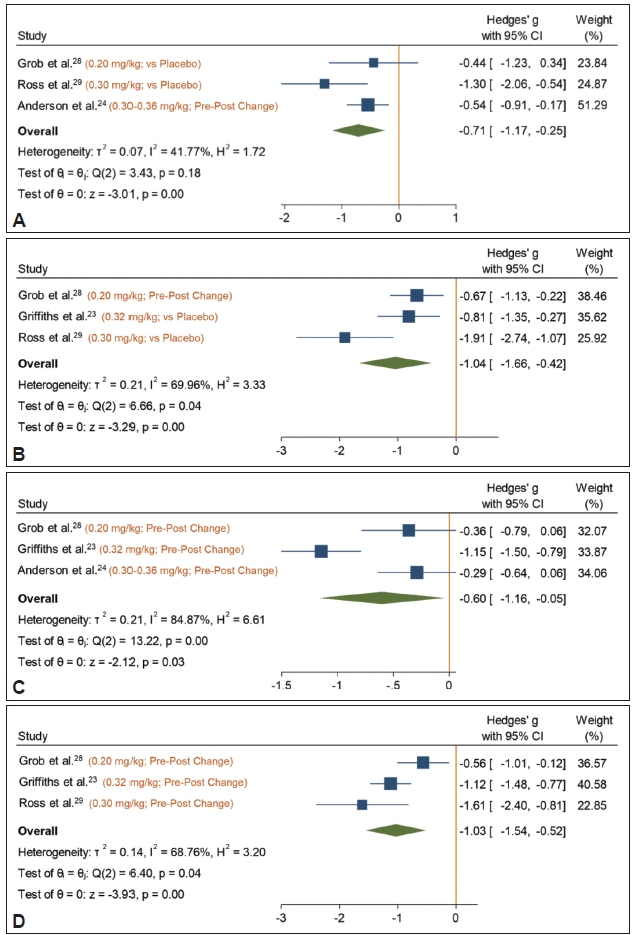 |
 |
- Search
| Psychiatry Investig > Volume 18(10); 2021 > Article |
|
Abstract
Objective
Methods
Results
Supplementary Materials
Supplementary Figure 2.
Supplementary Figure 3.
Supplementary Figure 4.
Supplementary Figure 5.
Supplementary Figure 6.
Supplementary Figure 7.
Supplementary Figure 8.
Supplementary Figure 9.
Supplementary Figure 10.
Supplementary Figure 11.
Supplementary Figure 12.
Supplementary Figure 13.
Supplementary Figure 14.
Notes
Availability of Data and Material
The datasets generated or analyzed during the study are available from the corresponding author on reasonable request.
The authors have no potential conflicts of interest to disclose.
Author Contributions
Conceptualization: Dian-Jeng Li, Chih-Sung Liang. Data curation: Chia-Ling Yu, Fu-Chi Yang, Szu-Nian Yang, Ping-Tao Tseng, Brendon Stubbs, Ta-Chuan Yeh, Chih-Wei Hsu. Formal analysis: Dian-Jeng Li, Chih-Sung Liang. Investigation: Chia-Ling Yu, Fu-Chi Yang, Szu-Nian Yang, Ping-Tao Tseng. Methodology: Dian-Jeng Li, Chih-Sung Liang. Project administration: Dian-Jeng Li, Chih-Sung Liang. Writing—original draft: Chia-Ling Yu, Fu-Chi Yang. Writing—review & editing: Szu-Nian Yang, Ping-Tao Tseng, Brendon Stubbs, Ta-Chuan Yeh, Chih-Wei Hsu, Dian-Jeng Li, Chih-Sung Liang.
Funding Statement
None
Figure 1.

Figure 2.

Figure 3.

Figure 4.

Table 1.
| Study | Dx | Sample size | Female (%) | Age | Dosing | Psychiatric comorbidities | Study design | Dropout | Serious AE |
|---|---|---|---|---|---|---|---|---|---|
| Grob et al. [28] | Cancer | 12 | 91.6 | 36-58 | Oral single dose, 0.20 mg/kg | Yes. Specific psychiatric disorders were not mentioned | Double-blind RCT | 0 | No |
| Griffiths et al. [23] | Cancer | 56 | 49.0 | 56.3 (10.0) | Oral single dose, 0.32 mg/kg (22 or 30 mg) | Adjustment disorder; dysthymia; GAD, and MDD | Double-blind RCT | 5 | No |
| Ross et al. [29] | Cancer | 31 | 62.1 | 56.3 (12.9) | Oral single dose, 0.3 mg/kg | Adjustment disorder and GAD | Double-blind RCT | 3 | No |
| Agin-Liebes et al. [30] | Cancer | 15 | 60.0 | 53 (13.5) | Oral single dose, 0.3 mg/kg | Adjustment disorder and GAD | Long-term follow-up after RCT | 1 | No |
| Anderson et al. [24] | HIV/cancer | 18 | 0.0 | 59.2 (4.4) | Oral single dose, 0.30-0.36 mg/kg | Mood disorder, anxiety disorder, and insomnia | Open-label single-arm trial | 0 | No |
REFERENCES
- TOOLS







